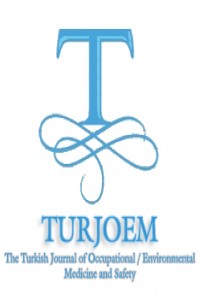Abstract
Fusaric acid
(FA), a naturally occurring contaminants of food and feeds, is a mycotoxin
produced by Fusarium sp. as secondary
metabolite. This study
evaluated the cytotoxic effects of FA in HeLA (human cervix carcinoma) cell
line by using 3-(4,5-dimethylthiazolyl-2)-2,5 diphenyltetrazolium
bromide (MTT) assay. The
potential genotoxic effects of FA were investigated in human lymphocytes by micronucleus
(MN) test. Cells were treated with FA at the following concentrations; 0.78,
1.56, 3.125, 6.25, 12.5, 25, 50, 100, 200 and 400 μg/mL. A solvent [DMSO 0.5%
(v/v) of the culture medium] and a negative
control was also maintained. Mitomycin-C (MMC) was used as the positive control
in human lymphocytes. FA significantly decreased cell viability (%) in a
dose dependent manner at 200
and 400 μg/ml concentrations at 24 h and 48 h compared to control and solvent
control. The half of inhibitory concentration (IC50) in exposed HeLA
cells was found at 200 μg/mL
(0.791±0.148) for 24h and, 400 μg/mL (0.584±0.026) for 48h. However, there was
no significant difference in
the frequency of MN and nuclear division index (NDI) at 0.78-12.5 μg/mL concentrations in human
lymphocytes. FA showed toxic effect at the five highest concentrations
(25, 50, 100, 200, 400 μg/mL) in human lymphocytes. The present results
indicate that FA has cytotoxic effect especially at higher concentrations.
However, it has no genotoxic effects on human lymphocytes at 0.78-12.5 μg/mL
concentrations.
References
- Department of Biology, Polatlı Art and Science Faculty, Gazi University, Ankara, Turkey
- Genetic Toxicology Laboratory, Department of Biology, Science Faculty, Gazi University, Ankara, Turkey
- Faculty of Health Sciences, Ankara University, Ankara, Turkey
- Departments of Medical Biology and Genetics, Medical Faculty, Gazi University, Ankara, Turkey
Abstract
References
- Department of Biology, Polatlı Art and Science Faculty, Gazi University, Ankara, Turkey
- Genetic Toxicology Laboratory, Department of Biology, Science Faculty, Gazi University, Ankara, Turkey
- Faculty of Health Sciences, Ankara University, Ankara, Turkey
- Departments of Medical Biology and Genetics, Medical Faculty, Gazi University, Ankara, Turkey
Details
| Journal Section | Articles |
|---|---|
| Authors | |
| Publication Date | February 16, 2017 |
| Published in Issue | Year 2017 Volume: Volume 2 Issue: İssue 1 (1) - 2.İnternational Congress Of Forensic Toxicology |


